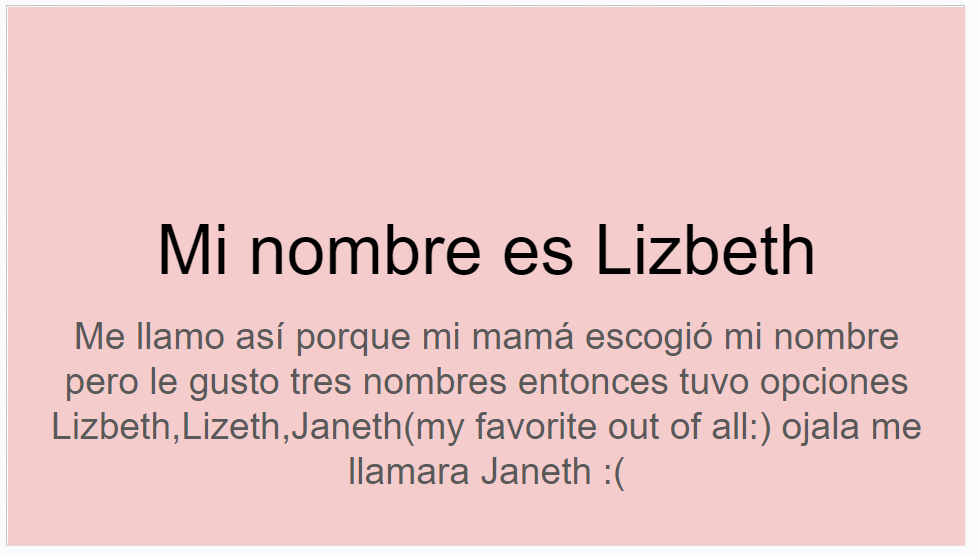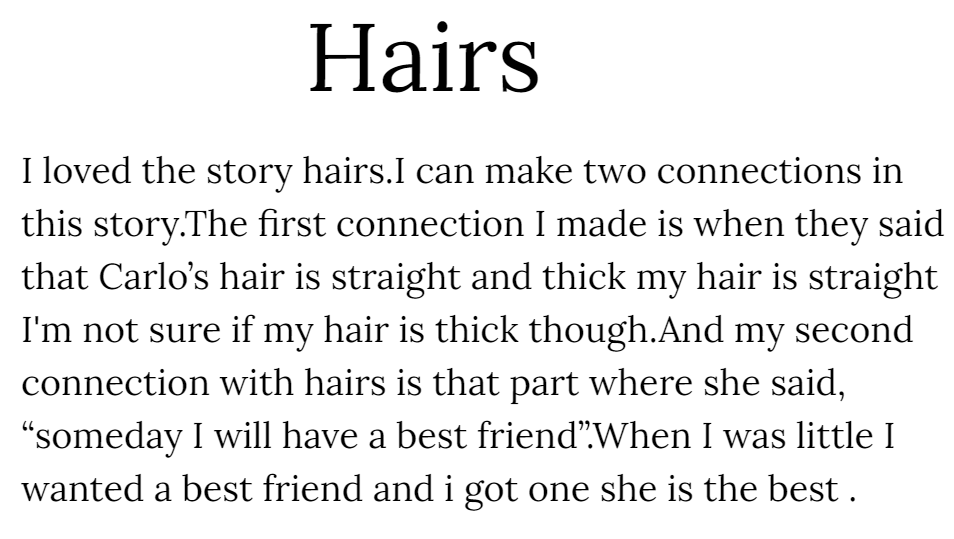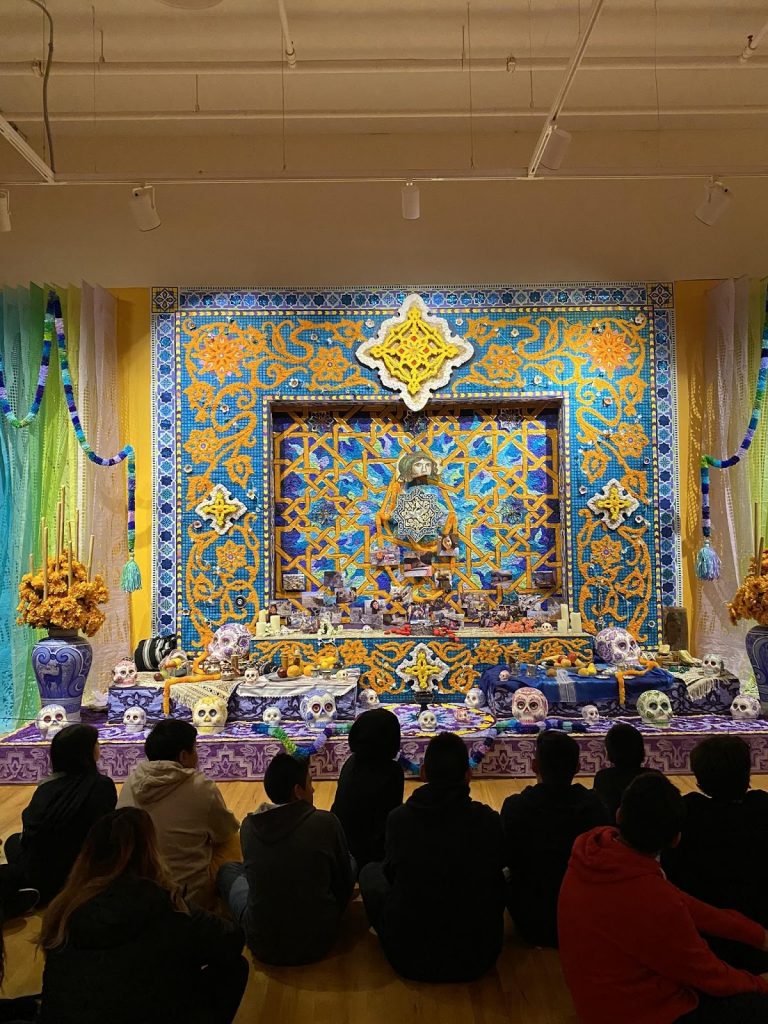Children’s Literature is a Powerful Tool
Roxann Hunsaker
I teach sixth-grade students in a dual language classroom, teaching half day in English and the other half in Spanish. Laurel Hill Elementary is a small community school located in Hanover Park, Illinois, just outside Chicago. We are a Title 1 school, and the population is about 90% Latinx.
Sixth grade is the year that they turn 12 and are part of the “Cool Kids Club,” no longer seeing themselves as babies. They begin to see adult themes in life, and they can handle mature discussions about difficult issues such as immigration. Throughout the school year, I read and shared texts from my Summer NEH Institute at the University of Arizona to create an inquiry around the theme of migration for the entire school year. Much of the work was tied into our unit on identity and happened at the beginning of the year. I was able to keep the theme alive across the year by reading aloud, having discussions, and exploring current events.
In my practice, I embrace the culture of students, most of whom are of Mexican heritage. I am part Mexican and connect on a personal and professional level. We all practice the same rituals, eat the same food, and have an ofrenda in our homes. We can explore these topics together. Students feel a strong sense of belonging in the classroom and connect to the literature I have chosen because the books represent their Latinx cultures. They see themselves in books. We started the year with Alma and How She Got Her Name by Juana Martinez Neal (2018) and explored where they got their names, why their family selected their names and whether they like their names. There is one example from a student named Lizbeth.
We continued exploring our identities with La Casa en Mango Street (Cisneros, 1991). In this book, we learn about a second-generation Chicana and the world around her. The story is set in Chicago. We learn that Esperanza does not like how her world looks–her house is too small, the neighbors too loud, her family too controlling. We focused on some of the vignettes, “Hair” being one that had strong connections. After we read it, students questioned whose hair is their’s, asking about who decided how they wear their hair. It is very common for parents in our community to decide if a girl can cut her hair. I don’t think that parents knew but, after reading the vignette, there were many haircuts.
In keeping with the theme of identity, we visited the Museum of Mexican Art and saw examples of ofrendas on display in a Latinx community. We learned about the history of Mexico, where so many of the students’ families are from, and explored the Mayan Civilization and Mesoamerica. We made connections to el Día de los Muertos and made papel picado. We even had a classroom ofrenda, full of photos of people we loved who passed.
Our curriculum is culturally responsive (Hammond, 2014) and I create a bridge between school and home with my choice of texts. These texts affirm students’ history and culture to keep students at the center of the classroom. While this curriculum is strong, I want to keep growing and learning to adapt to changing students in a changing world. After I participated in the NEH Summer Institute, I adapted the curriculum to open up to new cultures in my classroom and developed a multimodal text set and plans.I love to read aloud after lunch every day. Students calm down and get to go someplace else in their minds for 15-20 minutes. Last year, I read Refugee by Alan Gratz (2017) for the first time. They loved it and even took initiative to learn about the St. Louis, questioning if it was a real ship and event in Cuba. After seeing their responses to this book, I knew I could do more in my classroom and searched for summer programs for teachers, finding the NEH Institute, Migrant Waves in the Making of America at the University of Arizona.
During my time at the University of Arizona, I was exposed to Worlds of Words, literally and figuratively. I listened closely to the directors’ book recommendations and critiques. I was able to better understand what makes a good text related to immigration. When I went back to my classroom, I updated a lot of my work. As a result, I created a structure for deeper understandings of identity and an awareness of unfamiliar cultures and worlds. We explored migration and why people move. We had a newcomer in our classroom, so he helped provide insight into the experience of being uprooted and feeling like you don’t belong.
The movement in the curriculum because of these connections was exciting. We connected to migrants coming to our area since it was current news. We watched Chicago react to Venezuelans arriving, along with other asylum seekers. Some students felt like it was not fair for others to come legally when many of their parents did not. On a personal note, we received a Venezuelan friend of the family whom we decided to sponsor. We read Ground Zero by Alan Gratz (2021) about 9/11. In that book, students started to look at the perspective of the people of Afghanistan, not just the U.S. perspective. They began to understand how the people of other countries may not appreciate the U.S. government.
We watched and analyzed the movie “I Learn America” by Jean-Michel Dissard (2013). In this documentary, we follow the lives of newcomers at a high school in New York, learning about Muslim, Polish, Laotian, and Guatemalan students. Students thought about the world beyond the United States and Mexico. They were able to ask questions like, Do Muslim girls want to wear a hijab? Is it ok to be transgender? and we talked about the significance of tolerance. This movie invited students into great discussions about other cultures.
We read picturebooks as well as novels, all due to my time at the summer institute. The first read aloud, The Land of the Cranes by Aida Salazar (2020), led students to ask for more of this type of book every day. We connected to issues about crossing the border, encampment, family, and belonging. We read Dreamers by Yuyi Morales (2018). Areli is a Dreamer by Areli Morales (2021) was what started a conversation around DACA recipients, including one of our sixth-grade teachers. We read My Two Border Towns by David Bowles (2021) and our newcomer was so happy to see himself in a story. I read All the Stars Denied by Guadalupe Garcia McCall (2018) and compared the story to today how ICE treats undocumented people. As an attendee of the institute, I met the author, Guadalupe Garcia McCall, and she explained how she began to write children’s books, and I could share that story with students. She wrote a book based on her writing with her students and one of her students telling her, “Teacher, you should write a book!”
Other books we read included many different picturebooks by Duncan Tonatiuh. We also read Somos como las nubes/We Are Like Clouds (2016) by Jorge Argueta and Hear My Voice/Escucha mi voz interviews compiled by Warren Binford (2021). The graphic novel When Stars are Scattered (2020) by Victoria Jamieson and Omar Mohammed (2020) was passed around as well as the graphic novel Borders by Thomas King (2021).
When students leave Laurel Hill, they go on to middle school, so having exposure to other cultures in sixth grade better prepares them to work with people who are not like them in their school contexts. By giving them exposure to global cultures through literature, they are more likely to work towards making the world a better place. The books and discussions open up pathways to develop empathy toward characters from cultures beyond their own, creating a pathway to learn about others.
In reflecting, I can see that my previous goal of instilling pride in culture and acceptance of being in a community that is not White has been achieved. Students are proud to be Mexican and to be Latinx. They play with other sixth graders who do not look like them. Students are now self-desegregating. The goal for us is connecting to others who differ from their own culture. We need to see differences as normal. Interactions with cultures beyond our own can teach us a lot–if we are open to learning.
“Children’s books, which present subtle truths in simple terms, offer a valuable tool in retaining our moral bearings, especially amid a maelstrom of grief and rage.” -Miriam Udel (November 9, 2023) New York Times
References
Argueta, J. (2016). Somos como las nubes/We are like clouds. Groundwood.
Binford, W., ed. (2021) Hear my voice/Escucha mi voz. Workman.
Bowles, D. (2021). My two border towns. Illus. E. Meza. Kokila
Cisneros, S. (1991). La casa en Mango Street. Vintage Espanol.
Dossard, J.M. (2013). I learn America. Documentary.
Gratz, A. (2021). Ground Zero. Scholastic.
Gratz. A. (2017). Refugee. Scholastic.
Hammond, Z. (2014). Culturally responsive teaching and the brain. Corwin.
Jamieson, V. & Mohammed, O. (2020). When stars are scattered. Dial.
King, T. (2021). Borders. Illus. N. Donovan. Little, Brown.
Martinez-Neal, Juana (2018). Alma and how she got her name. Candlewick.
McCall, G. G. (2018). All the stars denied. Lee & Low.
Morales, A. (2021). Areli is a Dreamer. Illus. Luisa Uribe. Random House.
Morales, Y. (2018). Dreamers. Holiday House.
Salazar, A. (2020). The land of the cranes. Scholastic.
Roxann Hunsaker is a sixth-grade teacher, lover of children’s literature, and influencer of our future generation.
Authors retain copyright over the vignettes published in this journal and grant the journal right of first publication with the work simultaneously licensed under the following Creative Commons License:

WOW Stories, Volume XII, Issue 1 by Worlds of Words is licensed under a Creative Commons Attribution-NonCommercial-ShareAlike 4.0 International License.
Based on by Roxann Hunsaker work at https://wowlit.org/on-line-publications/stories/xii-1/9.
WOW stories: connections from the classroom
ISSN 2577-0551



